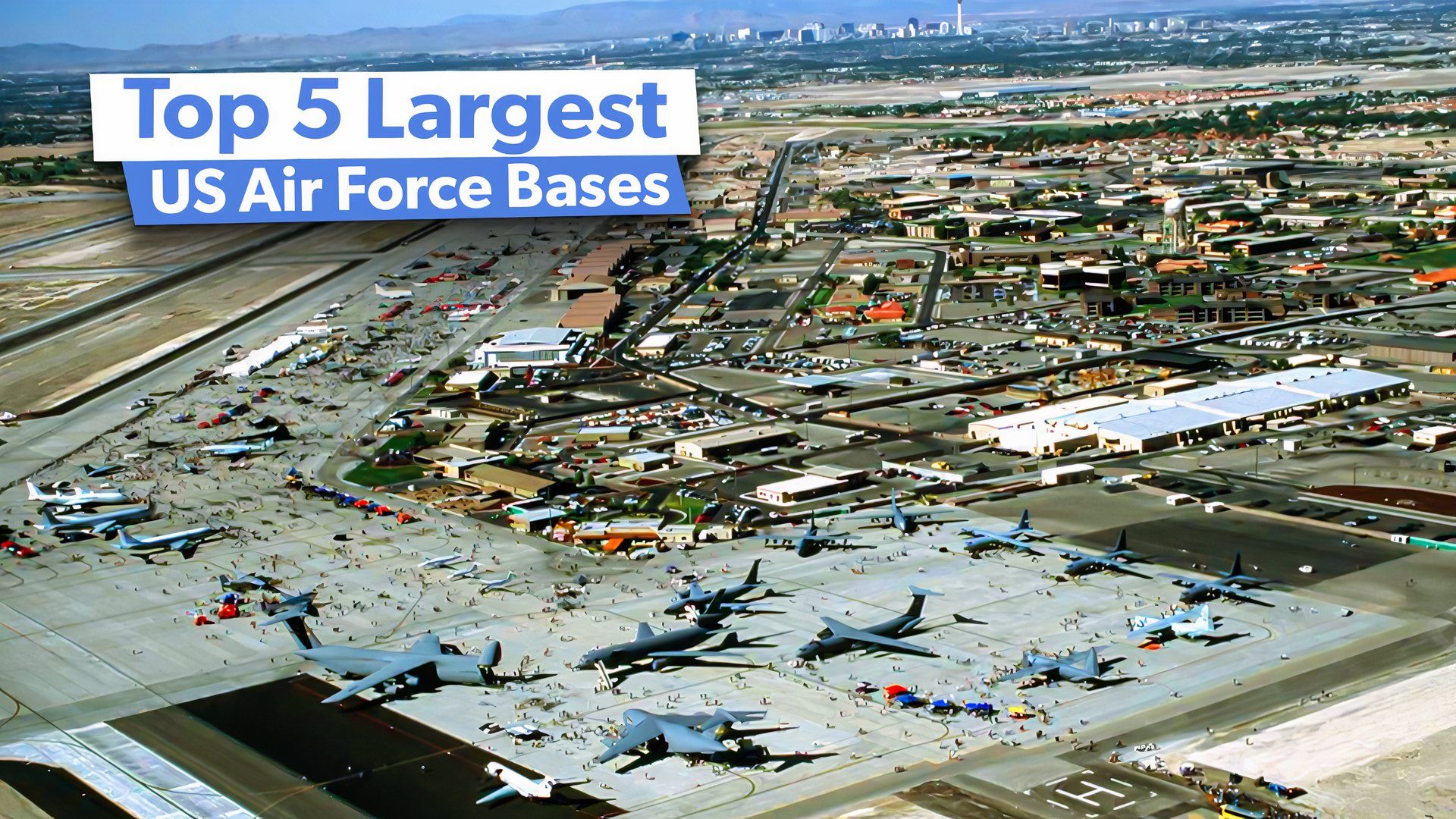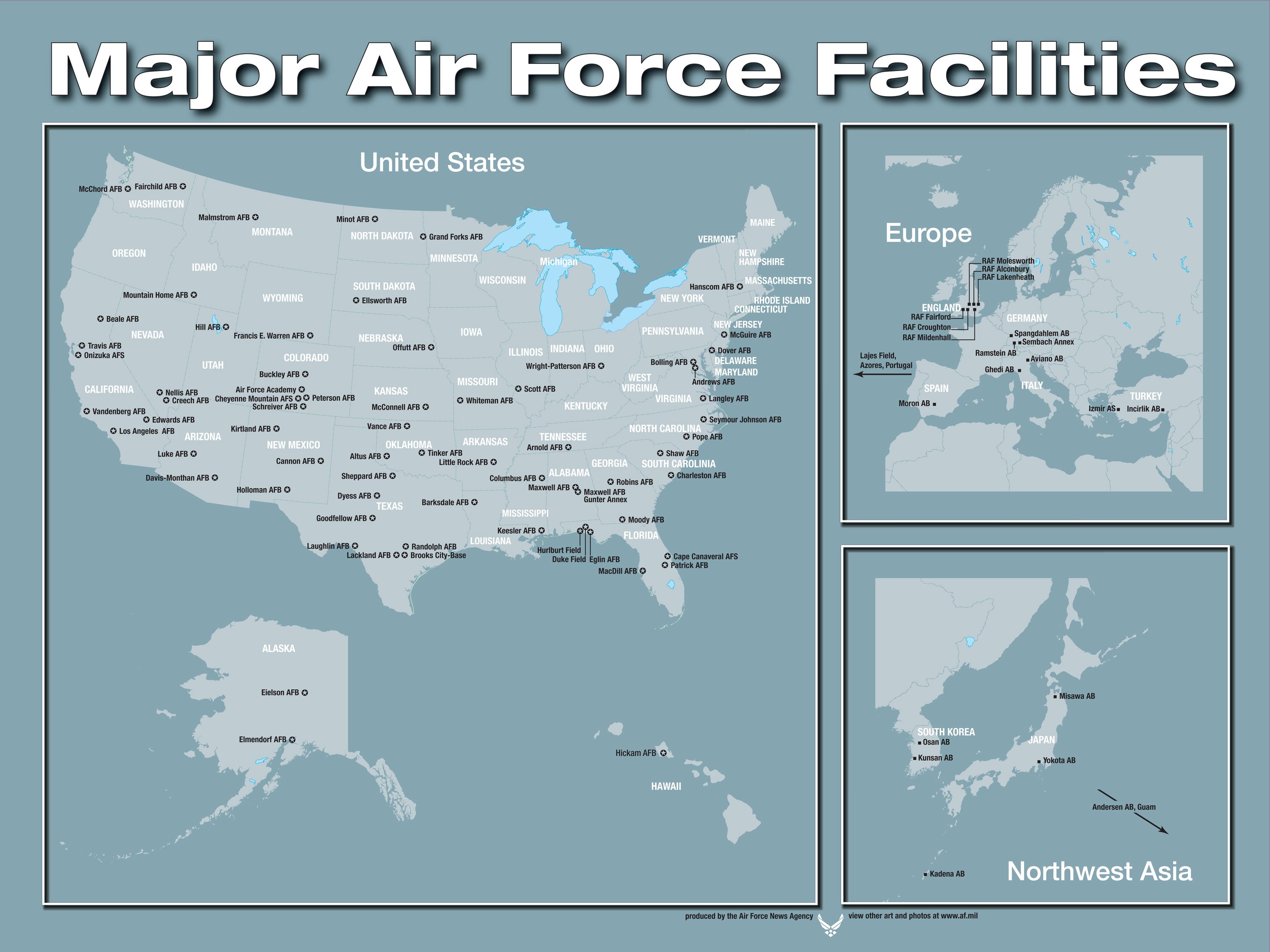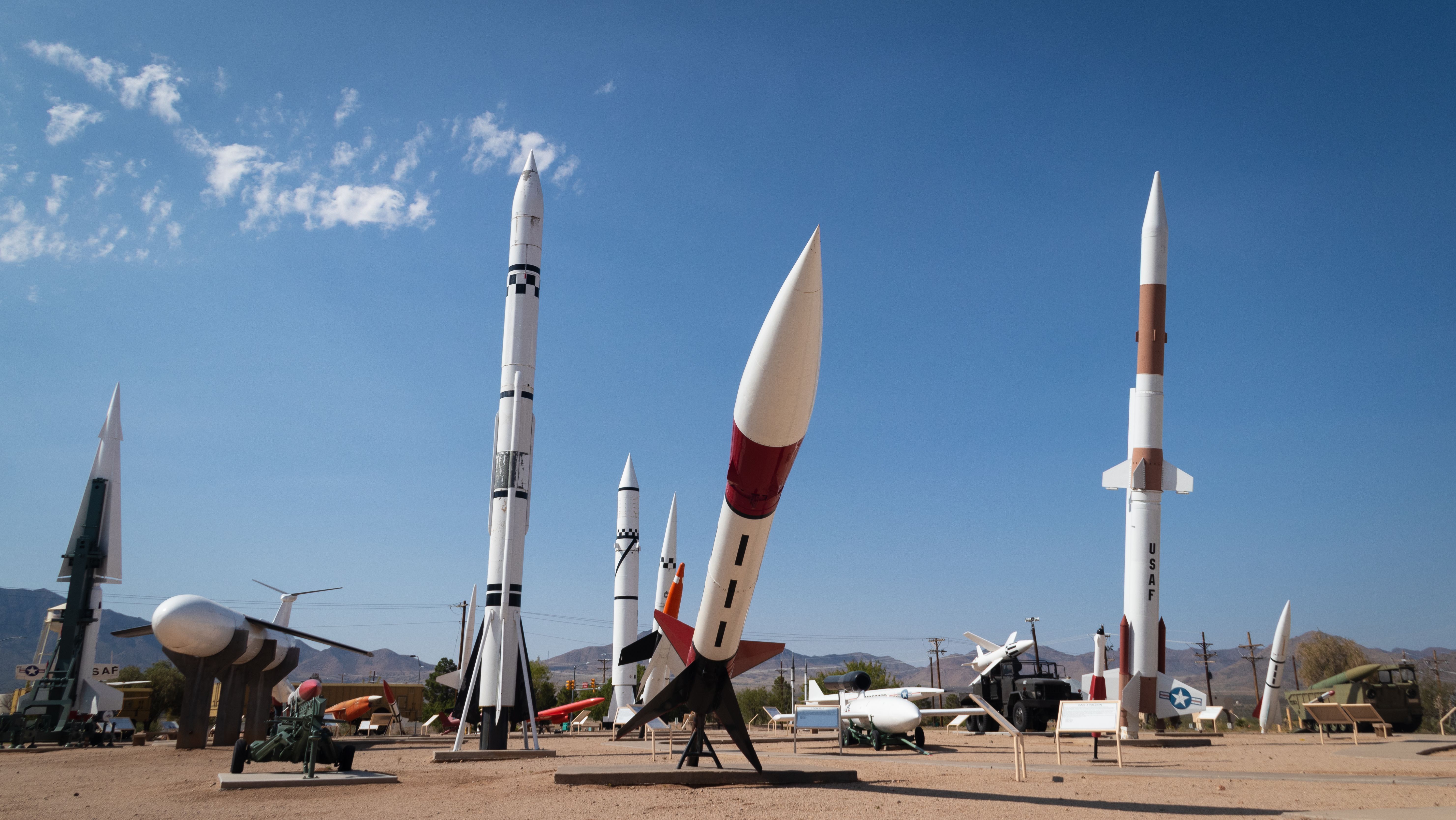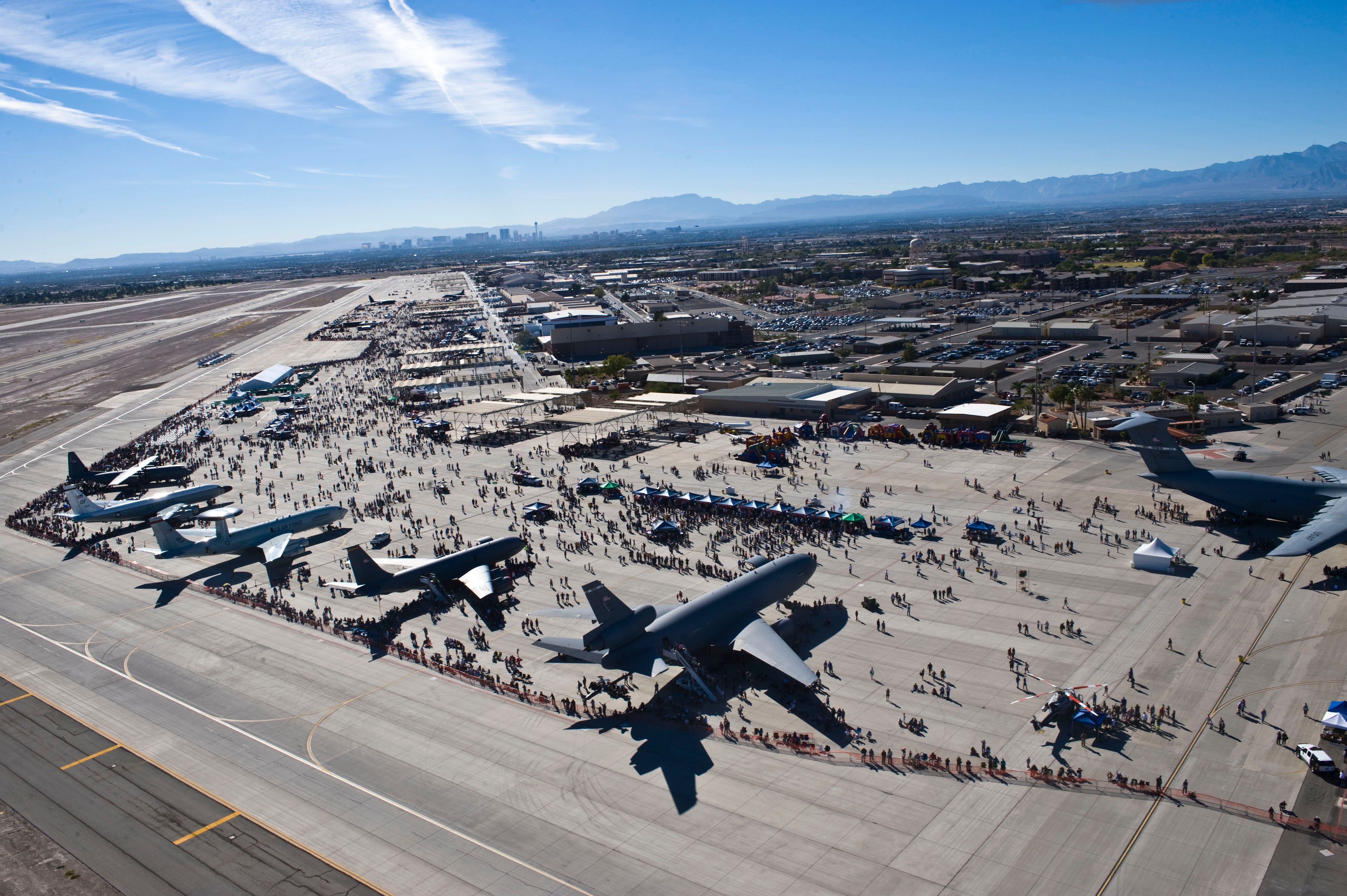Have you wondered just how much space it takes to train the largest air force in the world? Thousands of bombers
, helicopters
and supersonic jets
surely need a lot of free range to push their limits. You probably won’t be shocked to learn that a lot of space – thousands of square miles – has been specially set aside throughout the US (and outside the US too) for that purpose. Below, we’ll look at the five largest US Air Force bases
.
5
Twentynine Palms – 1,100 sq mi (2,849 sq km)
US Marine Corps Air Ground Combat Center
While technically not an Air Force base, Marine Corps Air Ground Combat Center (MCAGCC) 29 Palms is in California’s Mojave Desert. It is a major training facility for the US Marine Corps and other branches. Spanning approximately 1,100 square miles, it focuses on combined arms training and live-fire exercises, providing realistic environments for Marines
to prepare for combat. Established in 1952, the base features extensive training ranges, urban warfare sites, and support services for Marines and their families. Its arid landscape simulates conditions encountered in various theaters of war across the globe, making it vital to military readiness and operational training
.
USMC Base 29 Palms emphasizes wildlife conservation to preserve the natural beauty of the wilderness in its surrounding areas.
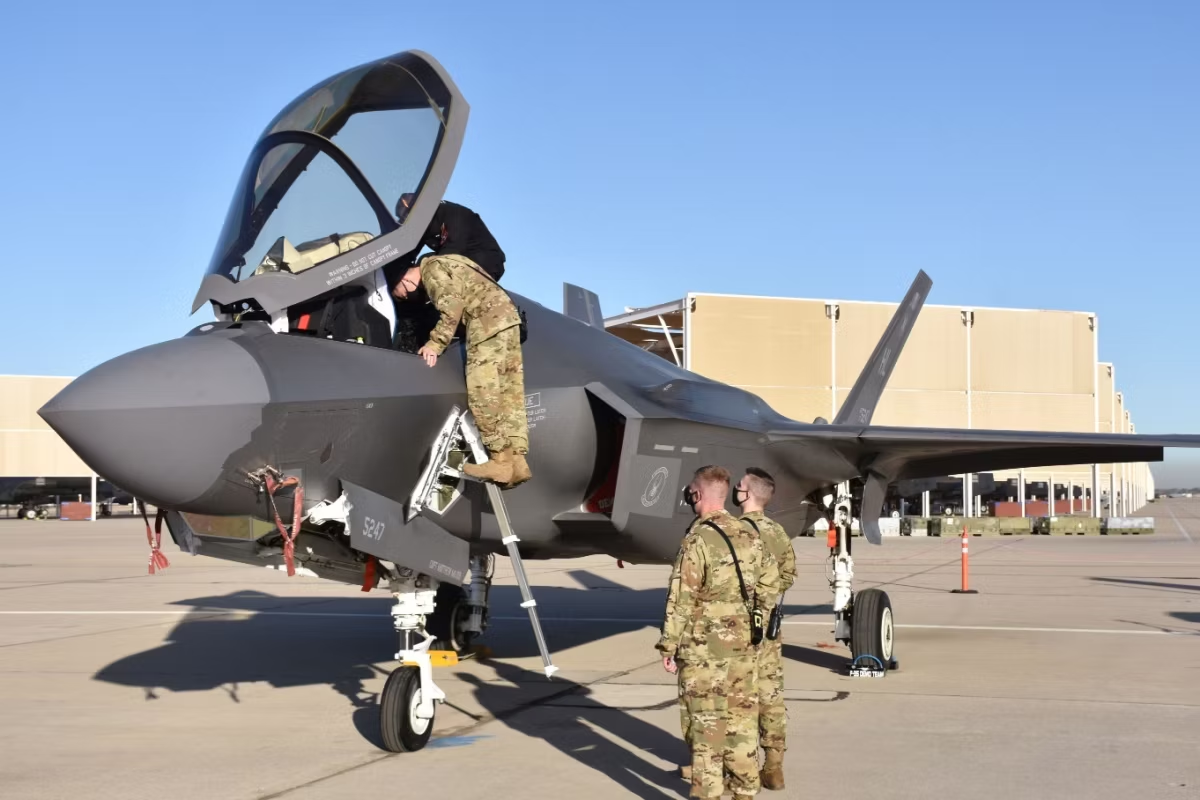
What US Air Force Bases Have You Visited?
We’ve reported on several US Air Force bases worldwide that serve unique national and international security functions. Some offer tours, like Davis-Montham Air Force Base in Tucson, Arizona, which hosts the world’s largest aircraft boneyard. Others have museums, the largest of which is at Wright-Patterson Air Force Base near Dayton, Ohio—the National Museum of the United States Air Force. Still, others host special events or are open to visitors under certain conditions.
According to the US Department of Defense, the best way to know if you’ll get a warm welcome is to check ahead on the bases’ website for the visitor center and get in touch to arrange a visit. You should also ensure that you have the proper identification, including your passport, and be prepared for your car and personal items to be thoroughly screened before you are allowed through. There are also specific gates for visitors, so you should not trust your GPS alone to take you to the right place. Confirm the right
4
Utah Test and Training Range – 2,675 sq mi (6,928 sq km)
Used by the US Air Force and other US military branches
The Utah Test and Training Range (UTTR) is an expansive military facility located in the western Utah desert. It serves as a testing ground for various aircraft, weapons systems, and military technologies
. The range supports air-to-ground training and live-fire exercises, facilitating realistic scenarios for the US Air Force and other branches.
Overhead are 57,000 cubic miles of airspace where pilots practice air-to-air maneuvers and engage simulated battlefield targets on the ground. Roughly the size of Connecticut.
Established to enhance combat readiness, UTTR is equipped with advanced instrumentation and monitoring systems. Its remote location allows for minimal disruption to civilian activities while also providing a secure environment for critical military operations and experimentation in a controlled setting.
“In August of 2012 the 388th Range Squadron was re-designated the Headquarters, Utah Test and Training Range, or UTTR. The UTTR continues to operate primarily as a world class test range, while also serving as a great training range which supports Air Force, Army Navy Marine units as well as a host of foreign countries.” -US Air Force
3
Barry M. Goldwater Air Force Range – 2,969 sq mi (7,689 sq km)
Critical US Air Force air-to-ground training and testing
The Barry M. Goldwater Range (BMGR) is a vast military training area located in southern Arizona, covering approximately 1.7 million acres. Managed by the U.S. Air Force, it serves as a critical site for air-to-ground training
, testing, and evaluation of military operations. The range supports various aircraft, including fighter
jets and unmanned aerial vehicles, facilitating live-fire exercises and advanced combat training. Its remote, arid landscape provides a realistic environment for operational readiness.
The BMGR also emphasizes wildlife conservation and archaeological preservation, balancing military needs with environmental stewardship and protecting natural and cultural resources in the area.
2
White Sands Missile Range – 3,200 sq mi (8,288 sq km)
US Army missile testing site
White Sands Missile Range (WSMR) is a prominent US Army facility located in southern New Mexico, covering nearly 3,200 square miles. Established in 1945, it serves as a key site for missile testing, research
, and development. The range supports a wide variety of military operations, including the testing of missiles
, rockets, and unmanned aerial vehicles
. Its diverse terrain allows for extensive experimentation in various environments. The facility plays a crucial role in advancing US defense capabilities while ensuring safety and environmental protection.
WSMR is also home to the historic Trinity Site, where the first atomic bomb was detonated.
1
Nellis Air Force Base – 5,000 sq mi (12,949 sq km)
The largest Air Force Base in the US and the world
Nellis Air Force Base, located in Nevada, is a key installation for the United States Air Force
, known for its advanced training programs and operational readiness.
Established in 1941, it hosts the Air Warfare Center, which oversees large-scale exercises, including the renowned Red Flag exercises that simulate realistic combat scenarios.
Nellis is home to various squadrons and supports a diverse fleet of aircraft, from fighters to unmanned systems. The base also emphasizes joint training with other military branches and international partners. Additionally, it plays a vital role in testing and evaluating new technologies
, contributing significantly to national defense capabilities.

